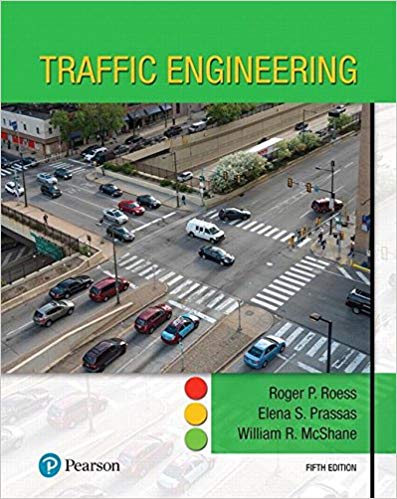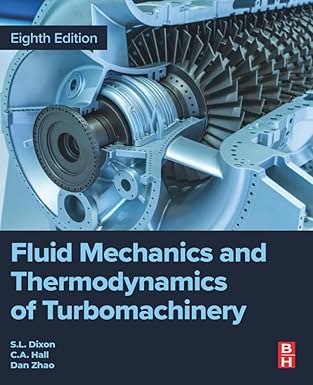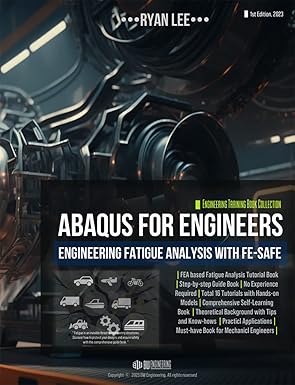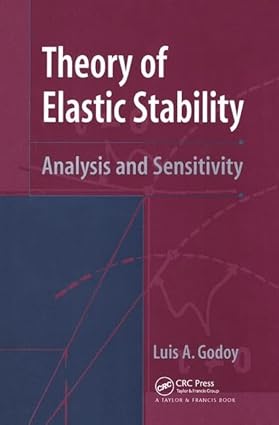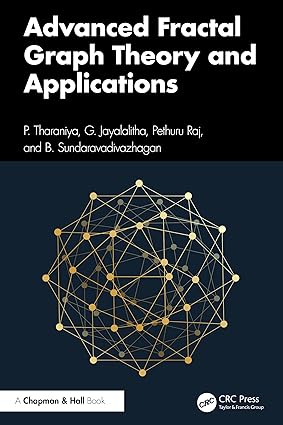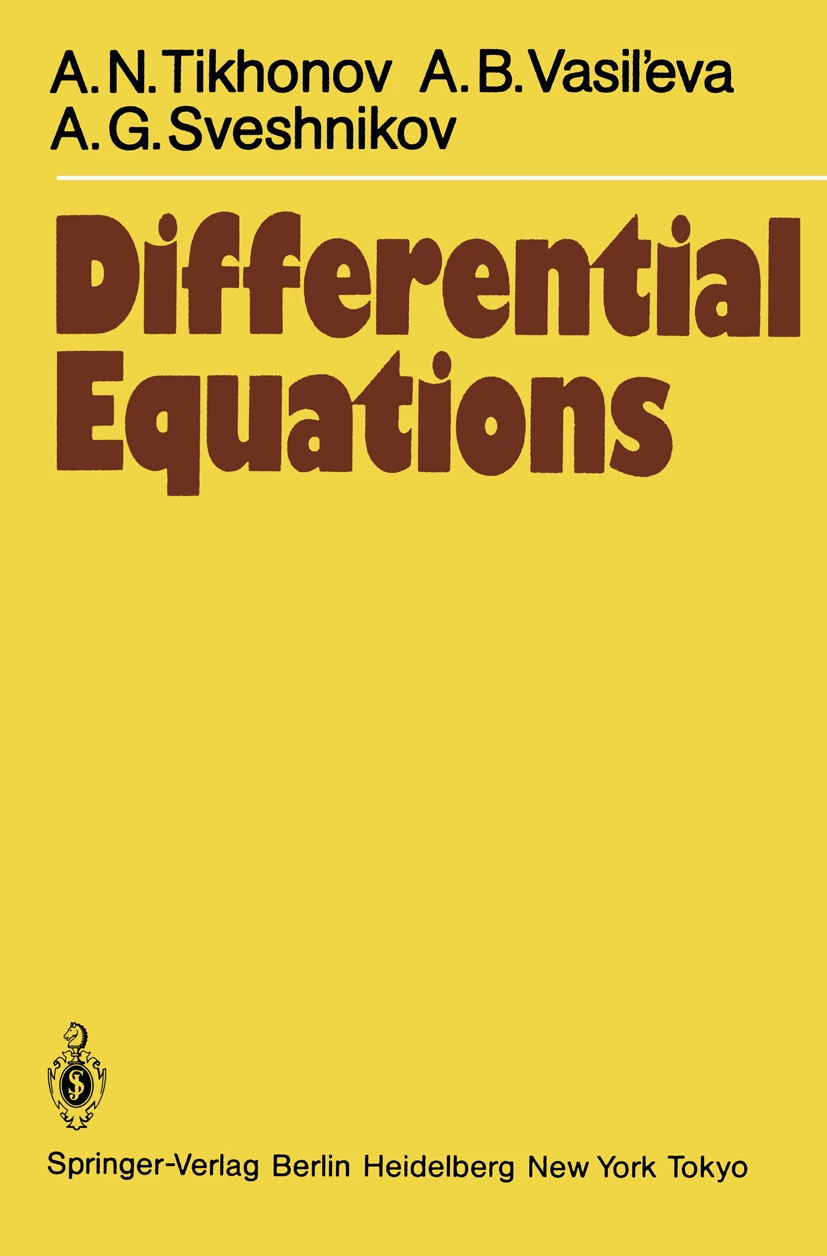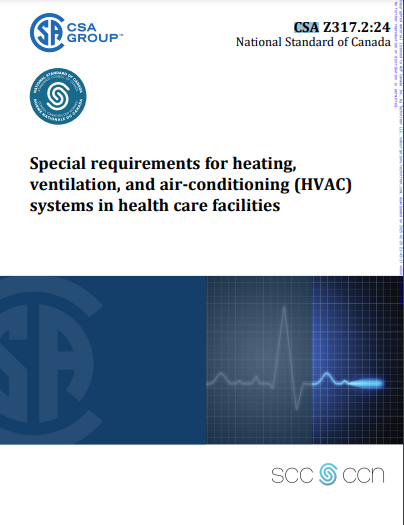This is the eBook of the printed book and may not include any media, website access codes, or print supplements that may come packaged with the bound book. For courses in traffic engineering. Focuses on the key skills and understanding required for careers in traffic engineering Traffic Engineering , 5th Edition focuses on the key engineering skills required to practice traffic engineering. It presents both fundamental theory and a broad range of its applications to solve modern problems and gives readers an understanding of and appreciation for planning, design, management, construction, operation, control, and system optimization. The 5th Edition includes the latest in industry standards and criteria, new material and updates to existing material, and new homework problems.
For courses in traffic engineering.
Focuses on the key skills and understanding required for careers in traffic engineering
Traffic Engineering , 5th Edition focuses on the key engineering skills required to practice traffic engineering. It presents both fundamental theory and a broad range of its applications to solve modern problems and gives readers an understanding of and appreciation for planning, design, management, construction, operation, control, and system optimization. The 5th Edition includes the latest in industry standards and criteria, new material and updates to existing material, and new homework problems.
برای دانلود حل المسائل کتاب مهندسی ترافیک اینجا را کلیک کنید
چکیده فارسی
این کتاب الکترونیکی کتاب چاپی است و ممکن است شامل هیچ رسانه، کد دسترسی به وبسایت، یا مکمل چاپی که ممکن است همراه با کتاب صحافی شده باشد نباشد. برای دوره های مهندسی ترافیک. تمرکز بر مهارتهای کلیدی و درک مورد نیاز برای مشاغل مهندسی ترافیک، مهندسی ترافیک، ویرایش پنجم بر مهارتهای مهندسی کلیدی مورد نیاز برای تمرین مهندسی ترافیک تمرکز دارد. هم تئوری اساسی و هم طیف وسیعی از کاربردهای آن را برای حل مسائل مدرن ارائه می دهد و به خوانندگان درک و درک برنامه ریزی، طراحی، مدیریت، ساخت و ساز، بهره برداری، کنترل و بهینه سازی سیستم را می دهد. نسخه پنجم شامل جدیدترین استانداردها و معیارهای صنعت، مطالب جدید و بهروزرسانیهای مواد موجود، و مشکلات تکالیف جدید است.
برای دوره های مهندسی ترافیک.
بر مهارتهای کلیدی و درک مورد نیاز برای مشاغل مهندسی ترافیک تمرکز دارد
مهندسی ترافیک، ویرایش پنجم بر مهارتهای مهندسی کلیدی مورد نیاز برای تمرین مهندسی ترافیک تمرکز دارد. هم تئوری اساسی و هم طیف وسیعی از کاربردهای آن را برای حل مسائل مدرن ارائه می دهد و به خوانندگان درک و درک برنامه ریزی، طراحی، مدیریت، ساخت و ساز، بهره برداری، کنترل و بهینه سازی سیستم را می دهد. ۵مین ویرایش شامل جدیدترین استانداردها و معیارهای صنعت، مطالب جدید و بهروزرسانیهای مواد موجود، و مشکلات تکالیف جدید است.
برای دانلود حل المسائل کتاب ترافیک ترافیک < a href="https://libsan.ir/product/instructors-solutions-manual-for-traffic-engineering-edition-5th-solutions-and-powerpoints">اینجا را کلیک کنید
ادامه ...
بستن ...
Ebook details:
عنوان: Traffic Engineering
نویسنده: Roger P Roess; Elena S Prassas; William R McShane
ناشر: Pearson; 5 edition (April 12, 2018)
زبان: English
شابک: 9780134599717
حجم: 60 Mb
فرمت: Epub + Converted pdf
ادامه ...
بستن ...
Traffic Engineering
Contents
Preface
What’s New in This Edition
Part I Basic Concepts and Characteristics
Chapter 1 Introduction
1.1 Traffic Engineering as a Profession
1.1.1 Safety: The Primary Objective
1.1.2 Other Objectives
1.1.3 Responsibility, Ethics, and Liability in Traffic Engineering
1.2 Transportation Systems and Their Function
1.2.1 The Nature of Transportation Demand
1.2.2 Concepts of Mobility and Accessibility
1.2.3 People, Goods, and Vehicles
1.2.4 Transportation Modes
1.3 History of U.S. Highway Legislation
1.3.1 The National Pike and the States’ Rights Issue
1.3.2 Key Legislative Milestones
Federal-Aid Highway Act of 1916
Federal-Aid Highway Act of 1934
Federal-Aid Highway Act of 1944
Federal-Aid Highway Act of 1956
Federal-Aid Highway Act of 1970
Federal-Aid Highway Act of 1983
ISTEA and TEA-21
SAFETY-LU
MAP-21
1.3.3 The National System of Interstate and Defense Highways
The System Concept
System Characteristics
Status and Costs
1.4 Elements of Traffic Engineering
1.5 Modern Problems for the Traffic Engineer
1.6 Standard References for the Traffic Engineer
1.7 Metric versus U.S. Units
1.8 Closing Comments
References
Chapter 2 Transportation Modes and Characteristics
2.1 Classifying Transportation Modes
2.2 The Transportation Infrastructure and Its Use
2.3 Modal Attributes
2.4 The Capacity of Transportation Modes
2.5 Multimodal Focus
References
Problems
Chapter 3 Road-User, Vehicle, and Roadway Characteristics
3.1 Dealing with Diversity
3.2 Road Users and Their Characteristics
3.2.1 Visual Characteristics of Drivers
Fields of Vision
Important Visual Deficits
3.2.2 Perception–Reaction Time
Design Values
Expectancy
Other Factors Affecting PRT
Reaction Distance
3.2.3 Pedestrian Characteristics
Walking Speeds
Gap Acceptance
Pedestrian Comprehension of Controls
3.2.4 Impacts of Drugs and Alcohol on Road Users
3.2.5 Impacts of Aging on Road Users
3.2.6 Psychological, Personality, and Related Factors
3.3 Vehicle Characteristics
3.3.1 Concept of the Design Vehicle
3.3.2 Turning Characteristics of Vehicles
Low-Speed Turns
High-Speed Turns
3.3.3 Braking Characteristics
3.3.4 Acceleration Characteristics
3.3.5 Total Stopping Distance and Applications
Safe Stopping Sight Distance
Decision Sight Distance
Other Sight Distance Applications
Change (Yellow) and Clearance (All-Red) Intervals for a Traffic Signal
3.4 Roadway Characteristics
3.4.1 Highway Functions and Classification
Trip Functions
Highway Classification
3.4.2 Preserving the Function of a Facility
3.5 Traffic Control Systems and Characteristics
3.6 Closing Comments
References
Problems
Chapter 4 Communicating with Drivers: Traffic Control Devices
4.1 The Manual on Uniform Traffic Control Devices
4.1.1 History and Background
4.1.2 General Principles of the MUTCD
4.1.3 Contents of the MUTCD
4.1.4 Legal Aspects of the MUTCD
4.1.5 Communicating with the Driver
4.2 Traffic Markings
4.2.1 Colors and Patterns
4.2.2 Longitudinal Markings
Centerlines
Lane Markings
Edge Markings
Other Longitudinal Markings
4.2.3 Transverse Markings
STOP and YIELD Lines
Crosswalk Markings
Parking Space Markings
Word and Symbol Markings
Other Transverse Markings
4.2.4 Object Markers
4.2.5 Delineators
4.3 Traffic Signs
4.3.1 Regulatory Signs
Regulatory Signs Affecting Right-of-Way
Speed Limit Signs
Turn and Movement Prohibition Signs
Lane-Use Signs
Parking Control Signs
Other Regulatory Signs
4.3.2 Warning Signs
4.3.3 Guide Signs
Route Markers
Destination Signs—Conventional Roads
Destination Signs—Freeways and Expressways
Service Guide Signs
Recreational and Cultural-Interest Guide Signs
Mileposts
4.4 Traffic Signals
4.4.1 Traffic Control Signals
Signal Warrants
Signal Indications
Signal Faces and Visibility Requirements
Operational Restrictions
4.4.2 Pedestrian Signals
4.4.3 Other Traffic Signals
4.4.4 Traffic Signal Controllers
4.5 Special Types of Control
4.6 Closing Comments
References
Problems
Chapter 5 Traffic Stream Characteristics
5.1 Types of Facilities
5.2 Traffic Stream Parameters
5.2.1 Volume and Rate of Flow
Daily Volumes
Hourly Volumes
Subhourly Volumes and Rates of Flow
5.2.2 Speed and Travel Time
5.2.3 Density and Occupancy
Density
Occupancy
5.2.4 Spacing and Headway: Microscopic Parameters
Spacing
Headway
Use of Microscopic Measures
Example
5.3 Relationships among Flow Rate, Speed, and Density
5.4 A Brief History of Mathematical Models of Freeway Flow—Traffic Flow Theory
5.4.1 Historical Background
5.4.2 Deriving Speed–Flow and Density–Flow Curves from a Speed–Density Curve
5.4.3 Determining Capacity from Speed–Flow–Density Relationships
5.4.4 Modern Uninterrupted Flow Characteristics
5.4.5 Calibrating a Speed–Flow–Density Relationship
5.4.6 Curve Fitting
5.5 Characteristics of Interrupted Flow
5.6 Closing Comments
References
Problems
Chapter 6 The Concepts of Demand, Volume, and Capacity
6.1 When Capacity Constrains Demand
6.2 Relationships among Demand, Volume (or Rate of Flow), and Capacity
6.3 The Formation of Queues and Their Impacts
6.4 Bottlenecks, Hidden Bottlenecks, and Demand Starvation
6.4.1 The Hidden Bottleneck
6.4.2 Demand Starvation
6.5 Capacity versus Queue Discharge
6.6 Closing Comments
Problems
Chapter 7 Level of Service and the Highway Capacity Manual: History and Fundamental Concepts
7.1 Uninterrupted and Interrupted Flow Facilities
7.2 A Brief Chronology of the Highway Capacity Manual
7.2.1 The 1950 Highway Capacity Manual
7.2.2 The 1965 Highway Capacity Manual
7.2.3 The 1985 Highway Capacity Manual
7.2.4 The 2000 Highway Capacity Manual
7.2.5 The 2010 Highway Capacity Manual
7.2.6 The 2016 Highway Capacity Manual
7.3 The Concept of Capacity
7.3.1 Capacity of Uninterrupted Flow Facilities
7.3.2 Capacity of Interrupted Flow Facilities
7.4 The Concept of Level of Service
7.4.1 In the Beginning: The 1950HCM
7.4.2 Level of Service Concept Introduced: The 1965HCM
7.4.3 LOS Develops: The 1985HCM and Its Updates
7.4.4 LOS Moves On: The 2000HCM
7.4.5 Introducing User Perception Indices: The 2010HCM
7.4.6 The 2016HCM and Beyond
7.4.7 Structural Issues with Level of Service
7.5 Service Volumes and Service Flow Rates
7.6 The v/c Ratio and Its Use in Capacity Analysis
7.7 Closing Comments
References
Problems
Chapter 8 Intelligent Transportation Systems
8.1 An Overview
8.2 ITS Standards
8.3 ITS Systems Engineering Process
8.4 ITS-Related Commercial Routing and Delivery
8.5 Sensing Traffic by Virtual and Other Detectors
8.6 Connected Vehicle Pilot Studies
8.7 Variable Pricing
8.8 Closing Comments
References
Problems
Part II Traffic Studies and Programs
Chapter 9 Traffic Data Collection and Reduction Methodologies
9.1 Sources of Data
9.1.1 Traditional Approaches
9.1.2 Changes in the Technology
9.1.3 Video-Based Measurements
9.1.4 Smartphones and Other Devices
9.1.5 Existing Data
9.1.6 Perspective
9.2 The Connected Vehicle
9.3 Applications of Traffic Data
9.4 Types of Studies
9.5 Manual Data Collection Methodologies
9.5.1 Traffic Counting Applications
9.5.2 Speed Study Applications
9.5.3 Other Manual Study Applications
9.5.4 Staffing and Workforce Considerations
9.6 Semi-Automated Studies Using Pneumatic Road Tubes and Similar Devices
9.7 Permanent Detectors and Their Use
9.8 Closing Comments
References
Problems
Chapter 10 Traffic Volume Studies and Characteristics
10.1 Volume Characteristics
10.1.1 Hourly Traffic Variation Patterns: The Phenomenon of the Peak Hour
10.1.2 Subhourly Variation Patterns: Flow Rates versus Volumes
10.1.3 Daily Variation Patterns
10.1.4 Monthly or Seasonal Variation Patterns
10.1.5 Some Final Thoughts on Volume Variation Patterns
10.2 Intersection Volume Studies
10.2.1 Arrival versus Departure Volumes: A Key Issue for Intersection Studies
10.2.2 Special Considerations for Signalized Intersections
10.2.3 Presentation of Intersection Volume Data
10.3 Limited Network Volume Studies
10.3.1 Control Counts
10.3.2 Coverage Counts
10.3.3 An Illustrative Study
10.3.4 Estimating Vehicle-Miles Traveled on a Network
10.3.5 Display of Network Volume Results
10.3.6 Modern Alternatives
10.4 Statewide Counting Programs
10.4.1 Sample Problems in Calibration of Daily and Monthly Variation Factors
10.4.2 Grouping Data from Control-Count Locations
10.4.3 Using the Results
10.4.4 Estimating Annual Vehicle-Miles Traveled
10.5 Specialized Counting Studies
10.5.1 Origin and Destination Counts
10.5.2 Cordon Counts
10.5.3 Screen-Line Counts
10.6 Closing Comments
References
Problems
Chapter 11 Speed, Travel Time, and Delay Studies
11.1 Introduction
11.2 Spot Speed Studies
11.2.1 Speed Definitions of Interest
11.2.2 Uses of Spot Speed Data
11.2.3 Collection of Spot Speed Data
11.2.4 Analysis and Presentation of Spot Speed Data
Frequency Distribution Table
Frequency and Cumulative Frequency Distribution Curves
Common Descriptive Statistics
Measures of Central Tendency: Mean, Median, Mode, and Pace
Measures of Dispersion
11.2.5 Statistical Analysis of Spot Speed Data
The Normal Distribution and Its Characteristics
The Standard Normal Distribution
Application: Tolerance and Confidence Intervals
Application: Estimating the Sample Size
Application: Before-and-After Spot Speed Studies
Application: Testing for Normalcy Using the Chi-Square Goodness-of-Fit Test
Applications: Other Statistical Tests
11.3 Travel-Time Studies
11.3.1 Field Study Techniques
11.3.2 Travel Time Data along an Arterial: An Example in Statistical Analysis
11.3.3 Overriding Default Values: Another Example of Statistical Analysis of Travel-Time Data
11.3.4 Travel-Time Displays
11.4 Intersection Delay Studies
11.5 Closing Comments
References
Problems
Chapter 12 Highway Traffic Safety: An Overview
12.1 Introduction
12.2 Current and Emerging Priorities
12.2.1 Crashes, Not Accidents
12.2.2 Pedestrians and Bicyclists
12.2.3 Traffic Calming
12.2.4 Distracted Driving
12.2.5 Vision Zero
12.2.6 The Connected Vehicle
12.2.7 The Driverless Vehicle
12.2.8 Smartphone Apps
12.2.9 Data-Rich Environment
12.3 The Highway Safety Manual
12.3.1 Steps for Performing an Analysis
12.3.2 System Planning
12.3.3 The HSM Predictive Method for Calculating Predicted and Expected Average Crash Frequency
12.3.4 An Overview of the HSM Models for Urban Intersections
Multivehicle Collisions at a 4SG Intersection
Single-Vehicle Collisions at a 4SG Intersection
Vehicle–Pedestrian Crashes at 4SG Intersections
Vehicle–Bicycle Collisions at 4SG Intersections
Crash Modification Factors for 4SG Intersections
Putting It All Together
12.3.5 The HSM Impact
12.4 Historical Crash Data and Regression to the Mean
12.5 Effective Crash Countermeasures
12.6 Approaches to Highway Safety
12.6.1 Exposure Control
12.6.2 Crash Risk Control/Crash Prevention
12.6.3 Behavior Modification
12.6.4 Injury Control
12.6.5 Postinjury Management
12.7 Commonly Used Crash Statistics and Analyses
12.7.1 Types of Statistics
12.7.2 Crash Rates
Population-Based Crash Rates
Exposure-Based Crash Rates
Common Bases for Crash and Fatality Rates
12.7.3 Severity Index
12.7.4 Identifying High-Accident Locations
12.7.5 Before-and-After Crash Analysis
12.8 Site Analysis
12.8.1 Crash Diagrams
12.8.2 Condition Diagrams
12.8.3 Interpretation of Condition and Crash Diagrams
12.9 Closing Comments
References
Problems
Chapter 13 Parking: Characteristics, Studies, Programs, and Design
13.1 Parking Demand
13.1.1 Parking Generation
13.1.2 Shared Parking
13.1.3 Zoning Regulations
13.1.4 Handicapped Parking Requirements
13.2 Parking Studies and Characteristics
13.2.1 Proximity: How Far Will Parkers Walk?
13.2.2 Parking Inventories
13.2.3 Accumulation and Duration
13.2.4 Other Types of Parking Studies
13.3 Design Aspects of Parking Facilities
13.3.1 Construction Costs
13.3.2 Basic Parking Dimensions
Parking Stall Width
Parking Stall Length, Width, and Projections
Aisle Width
13.3.3 Parking Modules
13.3.4 Access and Egress
13.3.5 Parking Garages
13.4 Parking Programs, Policy, and Management
13.5 Closing Comments
References
Problems
Chapter 14 Traffic Impact Studies and Analyses
14.1 Scope of This Chapter
14.2 An Overview of the Process
14.3 Tools, Methods, and Metrics
14.4 Case Study 1: Driveway Location
14.5 Case Study 2: Most Segments of a Traffic Impact Analysis
14.5.1 The Project Area and the Existing Condition
14.5.2 Proposed Use(s) of the Two Site(s)
14.5.3 Local Code and Local Ordinance Requirements
14.5.4 Other Given Conditions
14.5.5 Element 1: System Cycle
14.5.6 Element 2: The Developer’s Favorite Access Plan
14.5.7 Element 3: Existing Conditions, Capacity, and LOS Analyses
14.5.8 Element 4: Trip Generation
14.5.9 Element 5: Determine the Size of the Development, Trips Generated, and Internal Circulation
14.5.10 Element 6: Driveway Locations, Special Arterial, and Intersection Design Features
14.5.11 Element 7: Mitigation Measures
14.5.12 Element 8: Final Report and Presentation
14.6 Closing Comments
References
Problems
Part III Interrupted Flow Facilities: Design, Control, and Level of Service
Chapter 15 The Hierarchy of Intersection Control
15.1 Level I Control: Basic Rules of the Road
15.2 Level II Control: YIELD and STOP Control
15.2.1 Two-Way Stop Control
15.2.2 YIELD Control
15.2.3 Multiway Stop Control
15.3 Level III Control: Traffic Control Signals
15.3.1 Advantages of Traffic Signal Control
15.3.2 Disadvantages of Traffic Signal Control
15.3.3 Warrants for Traffic Signals
Warrant 1: Eight-Hour Vehicular Volume
Warrant 2: Four-Hour Vehicular Volume
Warrant 3: Peak Hour
Warrant 4: Pedestrians
Warrant 5: School Crossing
Warrant 6: Coordinated Signal System
Warrant 7: Crash Experience
Warrant 8: Roadway Network
Warrant 9: Intersection Near a Highway-Rail Grade Crossing
15.3.4 Summary
15.4 Closing Comments
References
Problems
Chapter 16 Traffic Signal Hardware
16.1 Functional Layouts at a Signalized Intersection
16.2 Some History
16.3 Controller and Other Standards
16.4 Common Terminology
16.5 Convention for Numbering Movements and Phases
16.6 Ring-and-Barrier Diagram
16.7 Preferential Treatment
16.8 ASCT System Objectives
16.9 Sensors and Data Feeds
16.10 Traffic Signal Display Hardware
16.11 Traffic Signal Maintenance
16.12 Closing Comments
References
Problems
Chapter 17 Fundamentals of Intersection Design and Layout
17.1 Intersection Design Objectives and Considerations
17.2 A Basic Starting Point: Sizing the Intersection
17.2.1 Unsignalized Intersections
17.2.2 Signalized Intersections
17.3 Intersection Channelization
17.3.1 General Principles
17.3.2 Some Examples
17.3.3 Channelizing Right Turns
17.4 Special Situations at Intersections
17.4.1 Intersections at Skewed Angles
17.4.2 T-Intersections: Opportunities for Creativity
17.4.3 Offset Intersections
17.4.4 Special Treatments for Heavy Left-Turn Movements
17.5 Closing Comments
References
Problems
Chapter 18 Principles of Intersection Signalization
18.1 Terms and Definitions
18.1.1 Components of a Signal Cycle
18.1.2 Types of Signal Operation
18.1.3 Treatment of Left Turns and Right Turns
18.2 Discharge Headways, Saturation Flow, Lost Times, and Capacity
18.2.1 Saturation Headway and Saturation Flow Rate
18.2.2 Start-Up Lost Time
18.2.3 Clearance Lost Time
18.2.4 Total Lost Time and the Concept of Effective GREEN Time
18.2.5 Capacity of an Intersection Lane or Lane Group
18.2.6 Notable Studies on Saturation Headways, Flow Rates, and Lost Times
18.3 The Critical-Lane and Time-Budget Concepts
18.3.1 The Maximum Sum of Critical-Lane Volumes: One View of Signalized Intersection Capacity
18.3.2 Finding an Appropriate Cycle Length
18.4 The Concept of Left-Turn (and Right-Turn) Equivalency
18.5 Delay as a Measure of Effectiveness
18.5.1 Types of Delay
18.5.2 Basic Theoretical Models of Delay
Components of Delay
Webster’s Uniform Delay Model
Modeling Random Delay
Modeling Overflow Delay
18.5.3 Inconsistencies in Random and Overflow Delay
18.5.4 Delay Models in the HCM
18.5.5 Sample Problems in Delay Estimation
18.6 Closing Comments
References
Problems
Chapter 19 Fundamentals of Signal Timing and Design: Pre-timed Signals
19.1 Introduction
19.2 Development of a Signal Phase Plan
19.2.1 Provisions for Left Turns: A Determining Factor
19.2.2 General Considerations in Signal Phasing
19.2.3 Phase and Ring Diagrams
19.2.4 Common Phase Plans and Their Use
Simple Two-Phase Signalization
Exclusive Left-Turn Phasing
Leading and Lagging Green Phases
Exclusive Left-Turn Phase with Leading Green
Eight-Phase Actuated Control
19.2.5 Special Cases and Phase Plans
The Exclusive Pedestrian Phase
Unique Geometries and Signal Phasing
Right-Turn Phasing
Right-Turn-on-Red
19.2.6 Summary and Conclusion
19.3 Determining Vehicular Requirements for Signal Design and Timing
19.3.1 Change and Clearance Intervals
19.3.2 Determining Lost Times
19.3.3 Determining the Sum of Critical-Lane Volumes
19.3.4 Determining the Desired Cycle Length
19.3.5 Splitting the Green
19.4 Determining Pedestrian Signal Requirements
19.5 Compound Signal Phasing
19.6 Sample Signal Timing Problems
References
Problems
Chapter 20 Fundamentals of Signal Timing and Design: Actuated Signals
20.1 Types of Actuated Control
20.2 Detectors and Detection
20.3 Actuated Control Features and Operation
20.3.1 Actuated Controller Features
20.3.2 Actuated Controller Operation
20.4 Actuated Signal Timing and Design
20.4.1 Phase Plans
20.4.2 Minimum Green Times
Point Detection
Presence Detection
Driver Expectation
20.4.3 Passage Time
Presence Detection
Point Detection
20.4.4 Detector Location
20.4.5 Yellow and All-Red Intervals
20.4.6 Maximum Green Times and the Critical Cycle
20.4.7 Pedestrian Requirements for Actuated Signals
20.4.8 Dual Entry Feature
20.4.9 Simultaneous Force-Off Feature
20.4.10 Recall Features
20.5 Sample Problems in Actuated Signal Design and Timing
References
Problems
Chapter 21 Signal Coordination for Arterials and Networks
21.1 A Key Requirement: A Common Cycle Length
21.2 The Time-Space Diagram
21.3 Ideal Offsets
21.4 Signal Progression on One-Way Streets
21.4.1 Determining Ideal Offsets
21.4.2 Bandwidth Efficiency
21.4.3 Bandwidth Capacity
21.4.4 Potential Problems
21.4.5 The Effect of Queued Vehicles at Signals
21.5 Signal Progression for Two-Way Streets and Networks
21.5.1 Offsets on a Two-Way Street
21.5.2 Network Closure
21.5.3 Finding Compromise Solutions
21.6 Types of Progression
21.6.1 Progression Terminology
21.6.2 The Alternating Progression
21.6.3 The Double-Alternating Progression
21.6.4 The Simultaneous Progression
21.6.5 Insights Regarding the Importance of Signal Spacing and Cycle Length
21.7 Software for Signal Progression Design
21.7.1 TruTraffic
21.7.2 Synchro
21.8 Coordination of Signals for Oversaturated Networks
21.8.1 System Objectives for Oversaturated Conditions
21.8.2 Metering Plans
21.8.3 Signal Remedies
Rapid Adjustment to Splits
Equity Offsets
Phase Reservice
Imbalanced Split
Pedestrian Push Buttons
21.8.4 Why Shorter Cycle Lengths are Important
21.8.5 Summary of Oversaturated Conditions
References
Problems
Chapter 22 Capacity and Level of Service Analysis: Signalized Intersections—The HCM Method
Part I Analysis of Pre-timed Signalized Intersections
22.1 Fundamental Concepts
22.1.1 The Lane Group Concept
22.1.2 The v/s Ratio as a Measure of Demand
22.1.3 Capacity and Saturation Flow Rate Concepts
Saturation Flow Rates
Capacity of a Lane Group
The v/c Ratio
22.1.4 Level-of-Service Concepts and Criteria
22.1.5 Effective Green Time and Lost Time Concepts
22.1.6 Analysis Time Period
22.2 Model Structure for Pre-timed Signals
22.3 Computational Steps in the Model
22.3.1 Define Input Data
Geometric Conditions
Traffic Conditions
Signalization Conditions
22.3.2 Convert Demand Volumes to Demand Flow Rates
22.3.3 Define Lane Groups
22.3.4 Assign Demand Flow Rate
22.3.5 Estimating the Saturation Flow Rate for Each Lane Group
Adjustment for Lane Width
Adjustment for Heavy Vehicles and Grade
Adjustment for Parking Conditions
Adjustment for Local Bus Blockage
Adjustment for Type of Area
Adjustment for Lane Utilization
Adjustment for Right Turns
Adjustment for Left Turns
Adjustments for Pedestrian and Bicycle Interference with Turning Vehicles
Adjustments for Downstream Lane Blockage and Sustained Spillback
Summary and Sample Problems
22.3.6 Determine Lane Group Capacities and v/c Ratios
22.3.7 Estimating Delay and Level of Service
Uniform Delay
Effect of Progression
The Incremental Queue Accumulation Approach for Calculating Uniform Delay, d1
Incremental Delay
Initial Queue Delay
Control Delay and Level of Service
Movement Groups
Aggregating Delay
22.3.8 Estimating Queue Service Ratio
22.4 Interpreting the Results of Signalized Intersection Analysis
22.5 Methodological Complexities
22.5.1 Modeling Delay and Capacity for Permitted Left Turns
Interval 1: r
Interval 2: gf
Interval 3: gdiff
Interval 4: gu
Interval 5: “sneakers”
Queue Accumulation Polygon for Permitted Left Turns
Saturation Flow Rate for the Five Intervals of a Permitted Left-Turn Phase
22.5.2 Modeling Compound Phasing
22.5.3 Movements Served by More than One Lane Group
Part II Analysis of Actuated Signals
Part III Calibration Issues
22.6 Measuring Prevailing Saturation Flow Rates
22.7 Measuring Base Saturation Flow Rates
22.8 Measuring Start-Up Lost Time
22.9 Calibrating Adjustment Factors
22.10 Normalizing Signalized Intersection Analysis
Part IV Closing Comments
References
Problems
Chapter 23 Planning-Level Analysis of Signalized Intersections
23.1 The TRB Circular 212 Methodology
23.2 The 2016 HCM Planning Methodology
23.2.1 Part I of the Methodology
23.2.2 Part II of the Methodology
23.3 Closing Comments
References
Problems
Chapter 24 Urban Streets and Arterials: Complete Streets and Level of Service
24.1 Designing Urban Streets
24.1.1 Pedestrians
24.1.2 Bicycles
24.1.3 Transit
24.1.4 Traffic Calming
24.2 Level of Service Analysis of a Multimodal Street Segment
24.2.1 Vehicle Methodology
24.2.2 Pedestrian Methodology
24.2.3 Bicycle Methodology
24.2.4 Transit Methodology
24.2.5 Summary
24.3 Facility Level of Service Analysis
24.4 Closing Comments
References
Problems
Chapter 25 Unsignalized Intersections and Roundabouts
Part I Two Way Stop-Controlled Intersections
25.1 TWSC Intersection Operation: A Fundamental Modeling Approach
25.2 Computational Steps in TWSC Intersection Analysis
25.3 Interpreting Results
Part II All-Way STOP-Controlled Intersections
25.4 Computational Steps
25.5 Comment
Part III Roundabouts
25.6 Types of Roundabouts and General Characteristics
25.7 Signing and Marking for Roundabouts
25.8 Capacity and Level of Service Analysis of Roundabouts
25.9 Closing Comments
References
Problems
Chapter 26 Interchanges and Alternative Intersections
26.1 Interchanges
26.1.1 Types of Interchanges
26.1.2 Interchanges with Roundabouts
26.1.3 Impacts of Interchange Type and Selection of an Appropriate Interchange
26.2 Alternative Intersections
26.2.1 Restricted Crossing U-Turn Intersections (RCUT)
26.2.2 Median U-Turn Intersections (MUT)
26.2.3 Displaced Left-Turn Intersections
26.2.4 Quadrant and Jug-Handle Intersections
26.2.5 Left-Turn Management
26.3 Level of Service Analysis
26.3.1 A Framework for Level of Service Analysis of Interchanges and Alternative Intersections
26.3.2 Extra-Distance Travel Time
26.3.3 Interchanges: Changes in Saturation Flow Rate Estimation
Adjustment Factor for Traffic Pressure, fv
Modification of Lane Utilization Adjustment Factors, fLU
Adjustment Factor for DDIs (fDDI)
Adjustment to fLT and fRT for Turning Radius at Interchanges
26.3.4 Interchanges: Other Modifications to Signalized Intersection Analysis
26.4 Closing Comments
References
Problems
Part IV Uninterrupted Flow Facilities Design, Control, and Level of Service
Chapter 27 An Overview of Geometric Design of Roadways
27.1 Introduction to Highway Design Elements
27.1.1 Horizontal Alignment
27.1.2 Vertical Alignment
27.1.3 Cross-Sectional Elements
27.1.4 Surveying and Stationing
27.2 Horizontal Alignment of Highways
27.2.1 Quantifying the Severity of Horizontal Curves: Radius and Degree of Curvature
27.2.2 Review of Trigonometric Functions
27.2.3 Critical Characteristics of Horizontal Curves
27.2.4 Superelevation of Horizontal Curves
Maximum Superelevation Rates
Side-Friction Factors (Coefficients of Side Friction, f)
Determining Design Values of Superelevation
Achieving Superelevation
27.2.5 Spiral Transition Curves
27.2.6 Sight Distance on Horizontal Curves
27.2.7 Compound Horizontal Curves
27.2.8 Reverse Horizontal Curves
27.3 Vertical Alignment of Highways
27.3.1 Grades
27.3.2 Geometric Characteristics of Vertical Curves
27.3.3 Sight Distance on Vertical Curves
Crest Vertical Curves
Sag Vertical Curves
27.3.4 Some Design Guidelines for Vertical Curves
27.4 Cross-Sectional Elements of Highways
27.4.1 Travel Lanes and Pavement
27.4.2 Shoulders
27.4.3 Side-Slopes for Cuts and Embankments
27.4.4 Guardrail
27.5 Closing Comments
References
Problems
Chapter 28 Capacity and Level of Service Analysis: Basic Freeway and Multilane Highway Segments
28.1 Facility Types Included
28.2 Segment Types on Freeways and Some Multilane Highways
28.3 Generic Speed-Flow Characteristics on Freeways and Multilane Highways
28.4 Levels of Service for Freeways and Multilane Highways
28.5 Base Speed-Flow Curves
28.5.1 Base Equation for Speed-Flow Curves
28.5.2 Measuring or Predicting the Free-Flow Speed
Estimating FFS for Freeways
Estimating FFS for Multilane Highways
28.5.3 Capacity Adjustment Factors and Speed Adjustment Factors
Adjustments for Inclement Weather
CAF for Traffic Incidents
Adjustments for a Non-Standard Driver Population
Adjustments for Work Zones
A Final Word on CAFs and SAFs
28.5.4 Sample Curves for a Selection of Free-Flow Speeds
28.6 Applications of Base Curves to Capacity and LOS Analysis of Freeways and Multilane Highways
28.6.1 Operational Analysis
28.6.2 Design Analysis
28.6.3 Service Flow Rate and Service Volume Analysis
28.7 The Heavy Vehicle Adjustment Factor and Related Issues
28.7.1 Passenger Car Equivalents
28.7.2 Passenger Car Equivalents for General Terrain Segments
28.7.3 Passenger Car Equivalents for Specific Grades
28.7.4 Composite Grades
28.7.5 The Heavy Vehicle Adjustment Factor (fHV)
28.8 Sample Problems
28.9 Closing Comments
References
Problems
Chapter 29 Capacity and Level of Service Analysis: Weaving Segments on Freeways and Multilane Highways
29.1 Level of Service Criteria for Weaving Segments
29.2 Converting Demand Volumes to Flow Rates in pc/h
29.3 A Brief History of the Development of Weaving Segment Methodologies
29.4 Component Flows in a Weaving Area
29.5 Critical Geometric Variables Describing a Weaving Segment
29.5.1 Lane Configuration
Numerical Characteristics of One-Sided Weaving Configurations
Numerical Characteristics of Two-Sided Weaving Configurations
29.5.2 Length of the Weaving Area
29.5.3 Width of a Weaving Area
29.6 Computational Procedures for Weaving Area Analysis
29.6.1 Parameters Used in Weaving Computations
29.6.2 Volume Adjustment (Step 2)
29.6.3 Determining Configuration Characteristics (Step 3)
29.6.4 Determining the Maximum Weaving Length (Step 4)
29.6.5 Determine the Capacity of the Weaving Segment (Step 5)
Capacity of a Weaving Segment Based Upon Breakdown Density
Capacity of a Weaving Segment Based upon Maximum Weaving Flow Rates
Final Capacity of the Weaving Segment and the v/c Ratio
Final Assessment of Capacity
29.6.6 Determining Total Lane-Changing Rates within the Weaving Segment (Step 6)
Total Lane-Changing Rate for Weaving Vehicles
Total Lane-Changing Rate for Nonweaving Vehicles
Total Lane-Changing in a Weaving Segment
29.6.7 Determining the Average Speed of Vehicles within a Weaving Segment (Step 7)
Average Speed of Weaving Vehicles
Average Speed of Nonweaving Vehicles
Average Speed of All Vehicles
29.6.8 Determining Density and Level of Service in a Weaving Segment (Step 8)
29.7 Sample Problems in Weaving Segment Analysis
References
Problems
Chapter 30 Capacity and Level of Service Analysis: Merge and Diverge Segments on Freeways and Multilane Highways
30.1 Level-of-Service Criteria
30.2 Converting Demand Volumes
30.3 Fundamental Variables Involved in Merge and Diverge Segment Analysis
30.4 Computational Procedures for Merge and Diverge Segments
30.4.1 Estimating Demand Flow Rates in Lanes 1 and 2 (Step 2)
Basic Algorithms
Determining Values of PFM and PFD
The Equivalence Distance on Six-Lane Freeways
Computing v12 Immediately Upstream of a Subject Ramp
Checking the “Reasonableness” of Results
30.4.2 Estimating the Capacity of the Merge or Diverge Segment (Step 3)
30.4.3 Determining Density and Level of Service in the Ramp Influence Area (Step 4)
30.4.4 Determining Expected Speed Measures (Step 5)
30.4.5 Final Comments on the Base Procedure
30.5 Special Cases in Merge and Diverge Analysis
30.5.1 Two-Lane On-Ramps
30.5.2 Two-Lane Off-Ramps
30.5.3 On- and Off-Ramps on Five-Lane Freeway Segments (One Direction)
30.5.4 Left-Hand On- and Off-Ramps
30.5.5 Lane Additions and Lane Drops
30.5.6 Major Merge and Diverge Areas
30.6 Closing Comments
30.7 Sample Problems in Merging and Diverging Analysis
References
Problems
Chapter 31 Operation and Analysis of Freeways and Highways
31.1 Traffic Markings on Freeways and Rural Highways
31.1.1 Freeway Mainline Markings
31.1.2 Rural Highway Markings
Centerlines
Edge Markings
Centerline Markings to Control Passing on Two-Lane Rural Highways
Special Markings for Three-Lane Highways
31.1.3 Ramp Junction Markings
31.2 Signing for Freeways and Rural Highways
31.2.1 Reference Location Posts
31.2.2 Route Numbering Systems and Route Signs
31.2.3 Interchange Numbering Systems
31.2.4 Route Sign Assemblies
31.2.5 Freeway and Expressway Guide Signing
31.2.6 Guide Signs for Conventional Roads
31.2.7 Warning Signs on Rural Highways
31.3 Establishing and Posting of Speed Limits on Rural Roads
31.4 Managed Lanes on Freeways
31.5 Active Transportation and Demand Management Strategies
31.6 Analysis of Freeway Facilities
References
Problems
Index
ادامه ...
بستن ...
